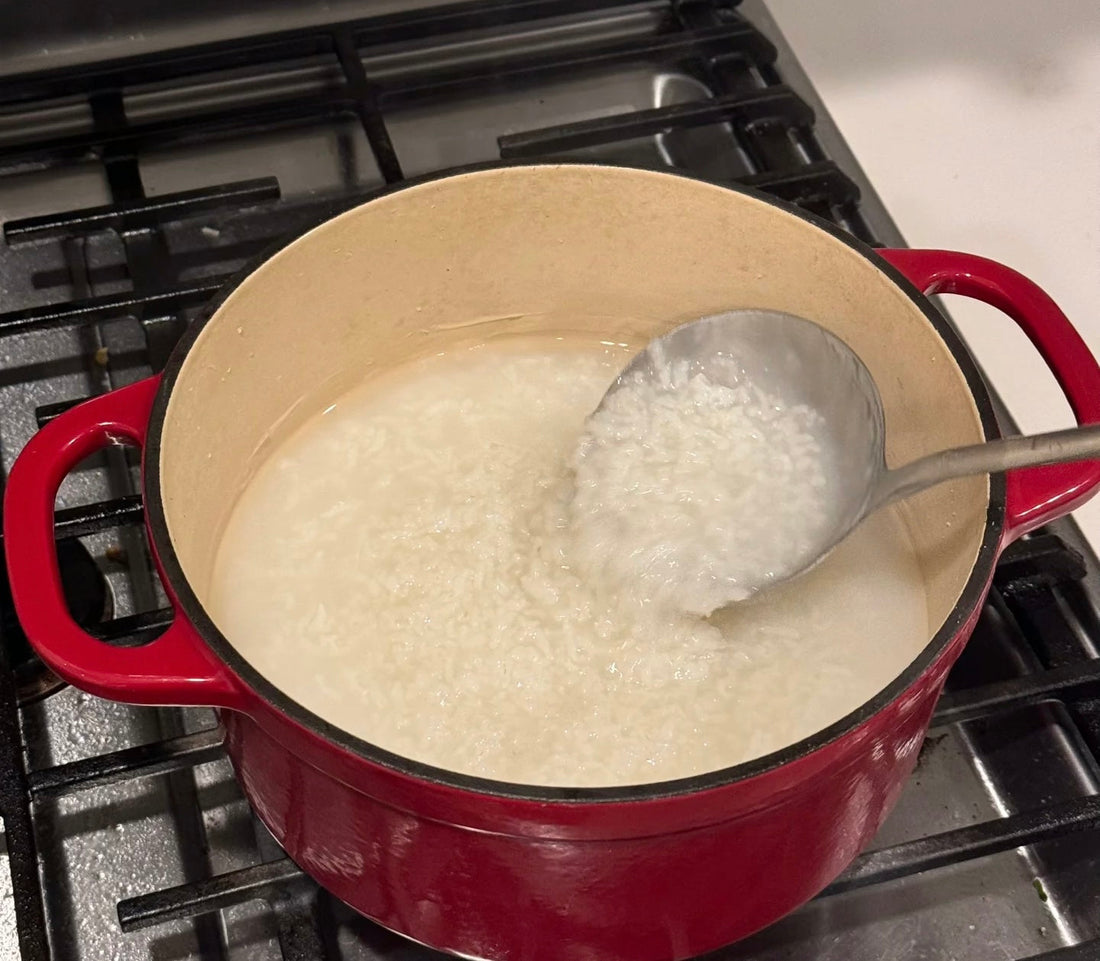
Rice Porridge: More Than a Meal, A Cultural and Healing Journey
Share
To many, rice porridge looks like the simplest of foods—just rice simmered in water. Yet across Asia, and especially in China, this humble dish carries layers of meaning: it reflects geography, climate, cultural identity, and even medicine.
Known as zhou (粥), xifan (稀饭), or moi (糜), rice porridge is never just one thing. Its preparation and taste change from north to south, from one community to another, each bowl telling its own story.
Names That Tell a Story
The first sign of diversity is the name itself:
- Congee (粥, zhōu) – the formal term, seen on menus across China.
- Xifan (稀饭) – the everyday colloquial word of the north and west.
- Moi (糜) – the ancient Teochew and Southern Fujian word, still proudly used in Guangdong and Taiwan.
- Paofan (泡饭) – in Jiangnan, leftover rice is revived by briefly boiling in water, a thrifty comfort.
Each name is a map, pointing you to a place and its way of life.

A Culinary Map of China
Cantonese Congee: The Silk of the South
Smooth, creamy, and endlessly comforting. Rice grains dissolve completely into broth, creating a velvet texture enriched with pork, seafood, or century eggs. In Cantonese tea houses of San Francisco or New York, what you are served is often this style, rooted in Chaozhou cooking traditions.
Northern Xifan: Clear and Hydrating
In Beijing or Shandong, porridge is clear and broth-like, with rice grains soft yet intact. It is often drunk alongside buns or pancakes, refreshing and light.
Teochew Moi: Al Dente Balance
Cooked quickly over high heat, the grains bloom but stay distinct, yielding a fragrant and slightly chewy texture. Always accompanied by small salty sides—pickled vegetables, fermented tofu, or salted olives.
Jiangnan Paofan: Quick and Thrifty
Made with last night’s rice, reheated in boiling water for only a few minutes. A fast breakfast solution, typically served with pickles and a salted duck egg.
Why “Old Fire Congee”?
In Cantonese kitchens, slow-simmered porridge is known as “lao huo zhou” (老火粥). The “old fire” refers to gentle heat that works patiently for hours, turning rice into silk. This method is prized for drawing out sweetness and making porridge especially easy to digest—food for the sick, the elderly, and anyone in need of comfort.

Rice Porridge Beyond China
- Japan – Okayu: Plain and lightly salted, served with pickled plum. Traditionally given to the ill.
- Vietnam – Cháo: Rich with fish sauce, chicken, or pork, topped with herbs.
- Thailand – Jok: Thick, hearty, often with minced pork, garlic, ginger, and a raw egg stirred in.
- Northern Europe: A sweet, milk-based rice porridge appears on Christmas tables in Sweden or Finland, flavored with cinnamon and sugar.
These bowls share the same foundation but reveal the local climate and culture.
The Healing Dimension
In Chinese tradition, rice porridge is also medicine. Its softness makes it the perfect carrier of herbs:
- Ginger porridge to warm the stomach.
- Mung bean porridge to clear summer heat.
- Red date and goji porridge to nourish blood and energy.
- Chicken porridge to restore strength after illness.
This is why in Chinese tradition, rice porridge is considered part of herbal diet therapy (yao shan)—gentle, restorative, and adaptable to the body’s changing states.
Much like the role of natural incense wands in meditation and daily rituals, congee embodies the quiet power of simple things to restore balance and clarity.
Recently, while recovering from illness, I found myself eating rice porridge every day. Its warmth soothed my digestion and made me feel lighter.
More than food, it felt like a mother’s embrace—gentle, protective, and deeply human. I realized why this dish has survived for centuries: it nourishes not only the body but also the spirit.
More Than Just Rice and Water
From the creamy silk of Cantonese congee to the clear northern brew, from Vietnamese street stalls to Nordic holiday feasts, rice porridge takes countless forms. Yet everywhere, it means the same thing: comfort, healing, and belonging.
So the next time you taste rice porridge, remember—you are holding centuries of culture, wisdom, and love in your spoon.
